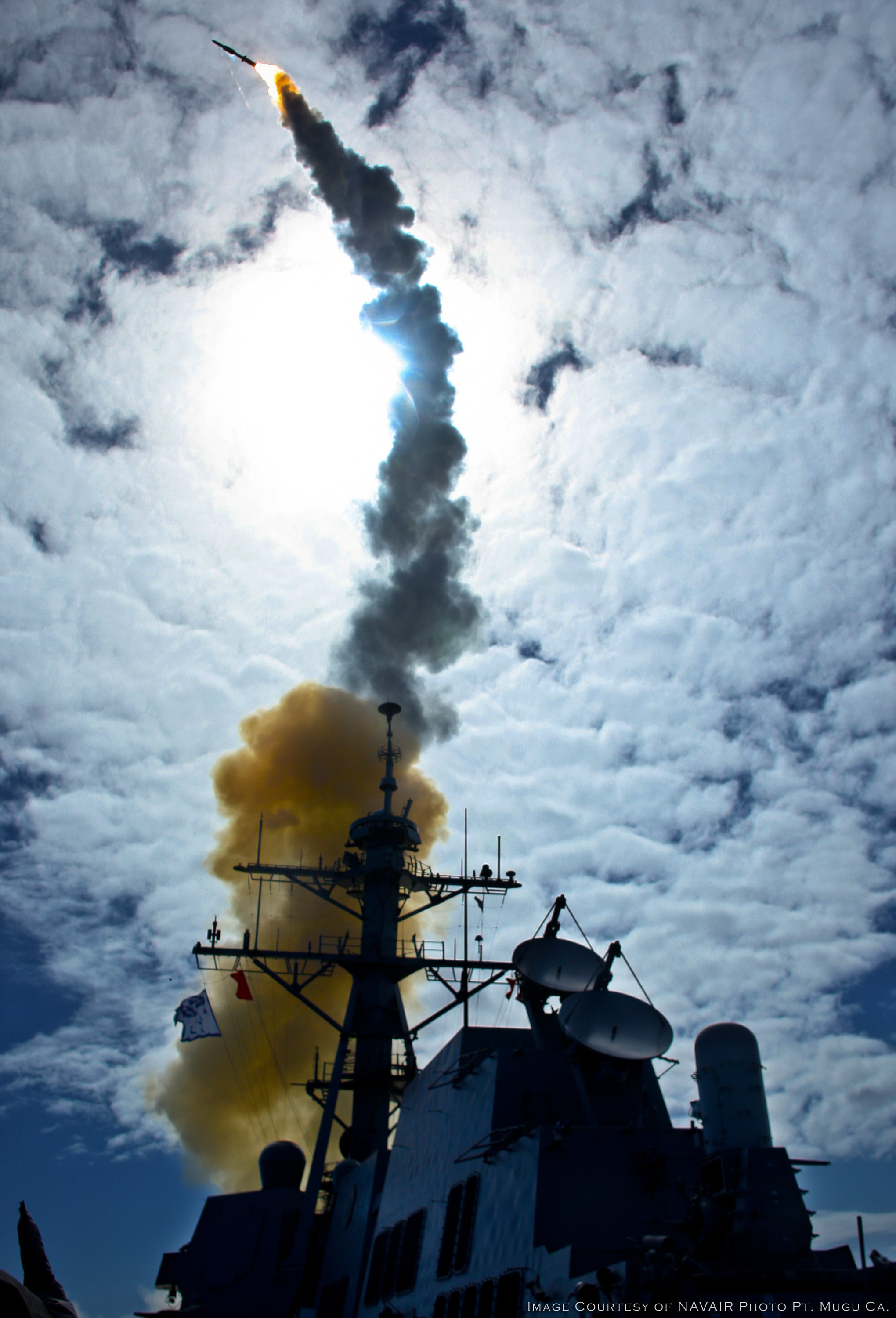
The U.S. Navy and the Missile Defense Agency has proved a modified Raytheon Standard Missile-6 (SM-6) missile can not only tackle cruise missiles and aircraft threats but also inbound ballistic missiles.
During a sea-based terminal ballistic missile defense (BMD) test at the Pacific Missile Range Facility (PMRF), Kauai, Hawaii, a SM-6 Dual I fired from guided missile destroyer USS John Paul Jones (DDG-53) successfully intercepted a ballistic missile target last week.
“This important test campaign not only demonstrated an additional terminal defense layer of the [ballistic missile defense system], it also proved the robustness of the multi-use SM-6 missile on-board a Navy destroyer,” said Missile Defense Agency director Vice Adm. James Syring in a Monday statement.
Subsequent tests over the next three days proved the SM-6 Dual I could also intercept and destroy aircraft and cruise missile threats.
While the Navy has long been able to use SM-2 Block IV for terminal ballistic missiles, however the SM-6 Dual I configuration adds the promise of traditional cruise missile and aircraft interdiction in the same package with a terminal ballistic missile defense interceptor.
The terminal phase “is the last opportunity to make an intercept before the warhead reaches its target. Intercepting a warhead during this phase is difficult and the least desirable of the phases because there is little margin for error and the intercept will occur close to the intended target,” read a description from MDA.
The modified SM-6 is slated to enter the fleet sometime next year.
“U.S. Navy commanders want both capability and flexibility to meet a wide variety of missions, and that’s exactly what SM-6 offers,” said Taylor W. Lawrence, president of Raytheon Missile Systems in a statement from the company.
“When it deploys next year, it will be the only missile in the world capable of both anti-air warfare and ballistic missile defense from sea.”
At the moment, the SM-6 terminal BMD capability is only inherent in the Navy’s upgraded and emerging guided missile ships with the Baseline 9 Aegis Combat System upgrade that provides enhanced processing power that would allow an Aegis ship to simultaneously track and target traditional air warfare threats like cruise missiles and aircraft as well as ballistic missiles.
A SM-6 serving both roles would free up valuable real estate in a guided missile combatants vertical launch cells for a more diverse load out.
As of May, Raytheon has delivered more than180 SM-6s to the Navy and started full rate production ahead of a planned order of 1,800 missiles.





